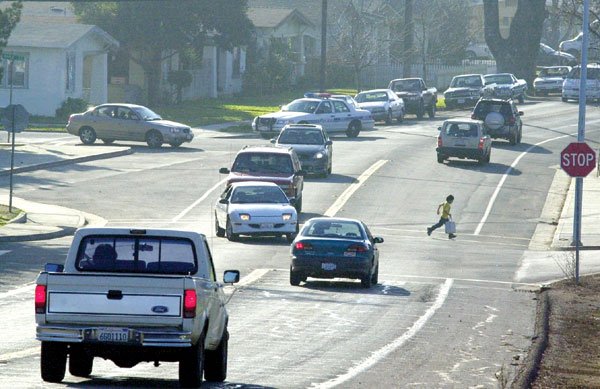GILROY
– With several big box retail stores on the east side of town
now open and several more ready to this year, the city is looking
for ways to control the increased levels of traffic on residential
sections of Sixth Street.
GILROY – With several big box retail stores on the east side of town now open and several more ready to this year, the city is looking for ways to control the increased levels of traffic on residential sections of Sixth Street.
By March, city traffic engineers want to launch community workshops so Sixth Street residents can help determine how to reduce the number and speed of cars that use the residential but heavily traveled road. City staffers will send bilingual mailers to contact residents, asking them to attend the street designing sessions geared at finding a way to control traffic without making the road an inconvenience and an eyesore for those who live on it.
“The toolbox (for traffic calming measures) starts with simple striping on the road and goes up to actual barriers,” City Traffic Engineer Kristi Abrams said. “The city is really reaching out to the neighborhood. I want the community to be able to decide what they want.”
Residents on and around Sixth Street have long expressed concerns about the traffic impacts of Gilroy’s new retail developments. Many in-town drivers avert a trip down Monterey Street and Leavesley Road to get to, say, the Gilroy Premium Outlets by using Sixth Street.
The city says it will install the traffic-calming measures on Sixth Street as early as spring.
By 2008, the city will connect Arroyo Circle, which now dead ends near Costco, with a 220-foot-long bridge. This will help keep drivers that want to traverse town away from Sixth Street. But it will do little to make motorists use Leavesley Road and Tenth Street when they are closer to Sixth Street.
This is why so traffic calming measures need to be installed along Sixth Street. These measures can be anything from striping to physical barriers but usually take the form of landscaped medians, which make streets feel narrower and cause drivers to reduce their speed.
More extreme traffic calming measures include speed bumps. On residential streets, the speed bumps may be only slightly raised so emergency vehicles can ride over them easily.
“When it comes to traffic, human behavior is like the flow of water. People find the path of least resistance,” Abrams said. “If you make the road slow enough and inconvenient enough, people will use another route.”
The city will have to pay $11.6 million for design and construction of all the roadwork. Costs will be covered by traffic impact fees charged to all development within the city.












